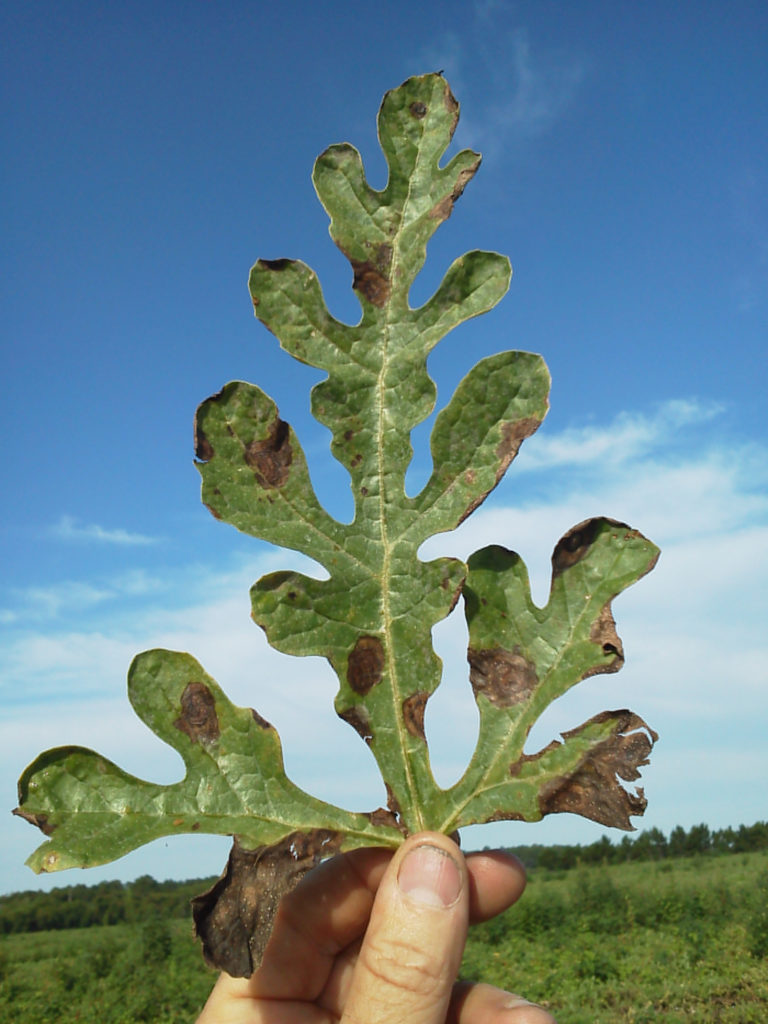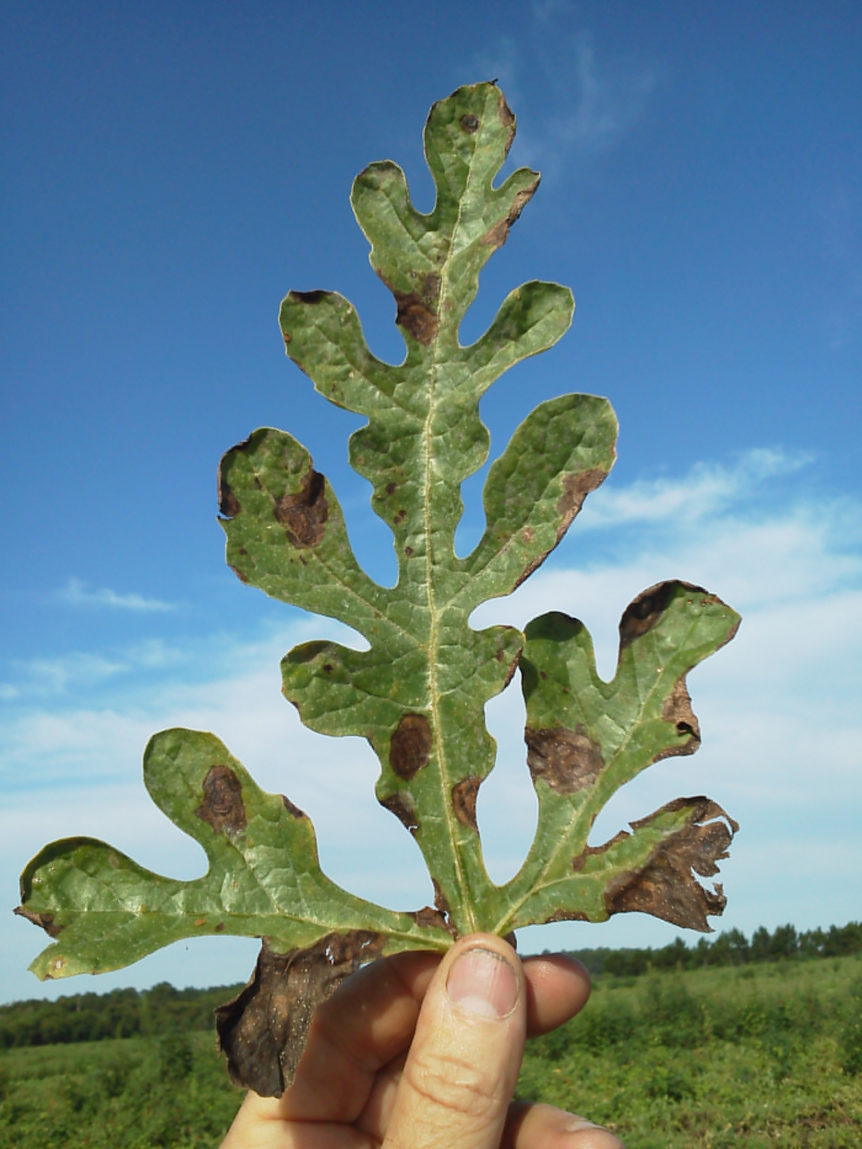By Clint Thompson
Gummy stem blight’s presence in North Florida watermelons this year was expensive to manage. It could be even costlier to growers’ sustainability in the future.

“Are we going to start losing effectiveness of chemistry?” pondered Bob Hochmuth, University of Florida Institute of Food and Agricultural Sciences (UF/IFAS) Regional Specialized Extension agent in Live Oak, Florida. “That’s the other concern we have. From a science standpoint it’s that these materials have worked pretty well in the past. This year they have not performed equally as well as they have in past years. It brings up questions and concerns about levels of resistance to these difference classes of chemicals that we’re depending upon to control gummy stem blight.”
Disease’s Impact
Gummy stem blight causes lesions on leaves and stems and leads to defoliation. The disease favors warm, wet conditions which were widely present in the North Florida region. Growers minimized yield reductions, but it was at a high cost.
“That disease, by far, was the most concerning of all of the diseases that we had, and we had them all. I think that one was the greatest concern. It’s hard to put a number on the yield reduction. I think in the end we battled it and battled it to the point where the actual yield reduction was relatively small. However, it was a very expensive disease,” Hochmuth said. “Materials that are relatively good against gummy stem blight are very expensive. It costs the growers significantly to battle gummy to try to keep up with it and not fall behind. I think for the most part they were able to hang on for dear life and hopefully didn’t have great losses overall.
“I think the other piece in the field is you get a hot spot where the disease gets ahead of us and causes foliage decay and decline. The fruit that were in that area may have already been made, and now you no longer have the vegetative cover and you begin to lose some to sunburn. There’s no question there was an impact on yield. But I think it was not huge and not as significant as these other factors like the expensive spray programs. They were much more impactful, I would say.”










